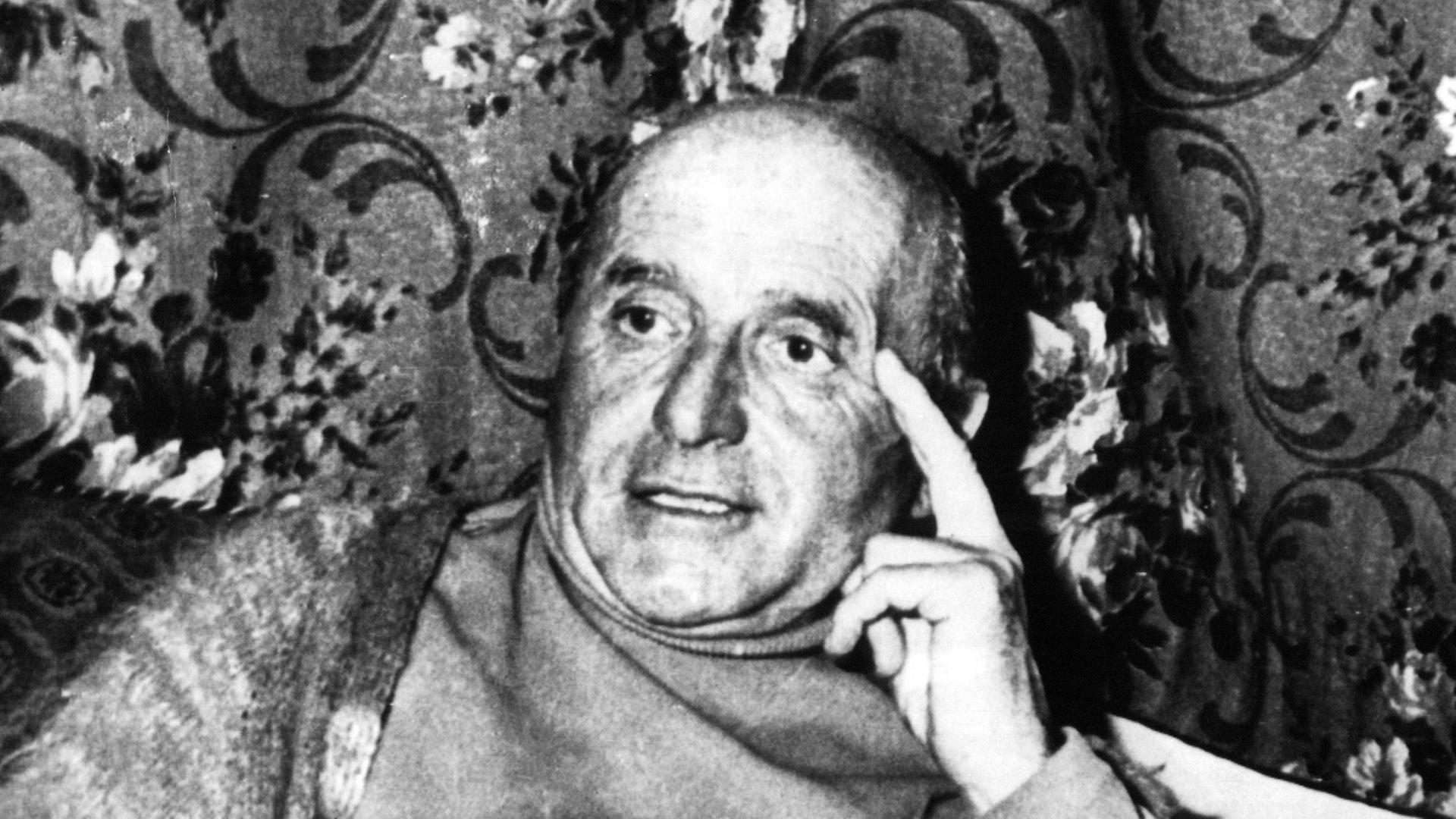Judi Lynn
Judi Lynn's JournalCuba's placement on the State Sponsor of Terrorism list has led to damaging consequences
BY MICHAEL GALANT, OPINION CONTRIBUTOR - 01/05/24 12:00 PM ET
Three years ago this month, as a parting shot mere days before leaving office, Donald Trump placed Cuba on the State Sponsors of Terrorism (SSOT) list, triggering a range of new sanctions against the island nation. Last month, members of Congress were left “furious” after learning that, despite assurances otherwise, President Biden has not even started the process of reviewing that decision.
Cuba’s SSOT designation was callous and unjustifiable when it was instituted to great dismay by President Trump. It is even more callous and unjustifiable today, as Cuba suffers the worst economic and humanitarian crisis in its contemporary history, largely as a result of U.S. policy.
The U.S. embargo of Cuba has been in place for over 60 years. In that time, its primary effect has been the immiseration of the Cuban people. U.S. sanctions have starved the Cuban economy of over $130 billion; hindered civilian access to essential goods like food, fuel and medicine; exacerbated hunger and poverty; and systematically undermined fundamental human rights. The evidence that broad economic sanctions harm civilians in targeted countries is overwhelming. Indeed, that is arguably the intent.
In 2014, President Obama broke with a half-century of systematic hostility, taking small but meaningful steps to thaw diplomatic relations and provide a measure of relief for the sanctions-starved Cuban economy, including removing the SSOT designation that President Reagan had imposed in the depths of the Cold War. While Trump took a wrecking ball to these fragile advances, many Cubans and Americans alike saw Biden’s election as a chance to return to the path laid by his former running mate.
More:
https://thehill.com/opinion/4390641-cubas-placement-on-the-state-sponsor-of-terrorism-list-has-lead-to-damaging-consequences/
Watch Japan attempt to ace its 1st-ever moon landing on Jan. 19 with this free livestream (video)
By Mike Wall
published about 9 hours ago
The nation's SLIM lunar lander will try to touch down at around 10:20 a.m. ET on Friday (Jan. 19).
Japan's robotic SLIM spacecraft will attempt to pull off the nation's first-ever successful moon landing on Friday morning (Jan. 19), and you can watch the action live.
SLIM (short for "Smart Lander for Investigating Moon" ) is scheduled to begin its touchdown operations Friday at 10 a.m. EST (1500 GMT; midnight on Jan. 20 Japan time), with a soft landing on the moon occurring 20 minutes later, if all goes according to plan.
You can watch it live here at Space.com, courtesy of the Japan Aerospace Exploration Agency, or directly via JAXA. Coverage will begin at 9 a.m. EST (1400 GMT; 11 p.m. Japan time).

Artist's illustration of Japan's SLIM lander attempting its lunar touchdown on Jan. 19, 2024. (Image credit: ISAS/JAXA)
SLIM launched atop a Japanese H-2A rocket on Sept. 6 of last year. The moon probe shared that ride with an X-ray space telescope called XRISM, which was deployed into low Earth orbit shortly after launch and recently beamed home its first test photos after a successful checkout period.
More:
https://www.space.com/japan-first-moon-landing-slim-webcast
A Working Class Victory on the Horizon in Colombia
JANUARY 16, 2024
BY OMAR OCAMPO
A working-class victory is on the horizon in Colombia.
The Seventh Committee of the House of Representatives voted to approve 16 of the 98 articles of the landmark Labor Reform bill right before the start of winter recess. The bill will now advance to a second round of legislative debates that will resume next month.
This is great news for the workers movement: Labor reform represents one of the three flagship policy proposals of the Petro-Márquez administration that seeks to equitably transform society. The bill will not only restore the labor rights that were rescinded a little over twenty years ago by a far-right government — it will go a step further and expand these rights.
The road to reform thus far has not been easy. Since the bill was first introduced last March, it predictably encountered fierce opposition from the business community and its political representatives. Those corporate stakeholders argued that the bill distributes benefits to an already privileged class of formalized and unionized workers.
But as researcher Santiago Garcés Correa highlighted in an article for the magazine 100 Días, such depictions do not accurately portray the lived experiences of the Colombian working-class. Petro’s labor reform platform is a reflection of workers’ daily grievances and struggles.
More:
https://www.counterpunch.org/2024/01/16/a-working-class-victory-on-the-horizon-in-colombia/
Massive trove of ancient artifacts, skeletons found in Brazil
January 13, 2024 01:11 P.M
Workers were just starting construction on a new apartment complex in northeastern Brazil when they began finding human bones and pottery shards, their edges worn smooth by time. Soon, excavations at the site in the coastal city of Sao Luis had uncovered thousands of artifacts left by ancient peoples up to 9,000 years ago -- a treasure trove archaeologists say could rewrite the history of human settlement in Brazil.
The lead archaeologist on the dig, Wellington Lage, says he had no idea what he was getting into when Brazilian construction giant MRV hired his company, W Lage Arqueologia, in 2019 to carry out an impact study at the site -- part of the routine procedure of preparing to build an apartment building. Covered in tropical vegetation and bordered by the urban sprawl of Sao Luis, the capital of Maranhao state, the six-hectare (15-acre) plot was known as Rosane's Farm, for the daughter of a late local landholder.
Researching the site, Lage learned intriguing vestiges had been found in the area since the 1970s, including part of a human jawbone in 1991. His team soon found much more: a flood of stone tools, ceramic shards, decorated shells and bones. In four years of digging, they have unearthed 43 human skeletons and more than 100,000 artifacts, according to Brazil's Institute for National Historic and Artistic Heritage (IPHAN), which announced the discovery this week, calling it "grandiose." Researchers now plan to catalogue the artifacts, analyze them in detail, put them on display and publish their findings. "We've been working four years now, and we've barely scratched the surface," said Lage, a 70-year-old Sao Paulo native whose wife and two children are also archaeologists.
Rewriting history
The preliminary findings are already grabbing attention in the scientific community. Lage says his team -- which grew to 27 people in all, including archaeologists, chemists, a historian and a documentary filmmaker -- has found four distinct eras of occupation at the site. The top layer was left by the Tupinamba people, who inhabited the region when European colonizers founded Sao Luis in 1612.
Then comes a layer of artifacts typical of Amazon rainforest peoples, followed by a "sambaqui": a mound of pottery, shells and bones used by some Indigenous groups to build their homes or bury their dead. Beneath that, around two meters (6.5 feet) below the surface, lies another layer, left by a group that made rudimentary ceramics and lived around 8,000 to 9,000 years ago, based on the depth of the find.
More:
https://kuwaittimes.com/article/10037/lifestyle/massive-trove-of-ancient-artifacts-skeletons-found-in-brazil/
Half a century later, the military junta still haunts Chile
Published: January 11, 2024 4:37pm EST
Chileans recently voted to reject a proposed new constitution which critics said was even more authoritarian and conservative than the 1980 dictatorship-era constitution it sought to replace.
Most notably, the rejected changes sought to strengthen property rights and uphold free-market principles. Roughly 56 per cent of voters rejected the new constitution while around 44 per cent were in favour. Debates about the constitution highlight the political challenges that have plagued Chile since the violent days of the military junta.
Hosted in Santiago, the 2023 Pan and Parapan American Games, were seen as an opportunity to signal a new Chile. For Toronto-born Olympian Melissa Humaña-Paredes, daughter of Chilean political refugees, entering the Estadio Nacional (National Stadium) as a flag-bearer for the Canadian team, conjured up simultaneous feelings of pride, and the images of the atrocities from 50 years ago.
Under the military dictatorship of Augusto Pinochet which ruled Chile from 1970 to 1990, many sport stadiums, especially the Estadio Nacional, were used as open-air prisons, where many Chileans were tortured and killed.
More:
https://theconversation.com/half-a-century-later-the-military-junta-still-haunts-chile-219790
Ancient cities discovered in the Amazon are the largest yet found
A mysterious civilisation built a network of cities and roads in the Amazon between 3000 and 1500 years ago, and then disappeared
By Michael Le Page
11 January 2024

Lidar scans of the Upano valley in Ecuador showing raised platforms
Stephen Rostain
Aerial surveys have revealed the largest pre-colonial cities in the Amazon yet discovered, linked by an extensive network of roads.
“The settlements are much bigger than others in the Amazon,” says Stéphen Rostain at the French National Center for Scientific Research in Paris. “They are comparable with Maya sites.”
What’s more, at between 3000 and 1500 years old, these cities are also older than other pre-Columbian ones discovered in the Amazon. Why the people who built them disappeared isn’t clear.
It is often assumed that the Amazon rainforest was largely untouched by humans before the Italian explorer Christopher Columbus reached the Americas in the 15th century. In fact, the first Europeans reported seeing many farms and towns in the region.
These reports, long dismissed, have in recent decades been backed up by discoveries of ancient earthworks and extensive dark soils created by farmers. One estimate puts the pre-Columbian population of the Amazon as high as 8 million.
More:
https://www.newscientist.com/article/2411924-ancient-cities-discovered-in-the-amazon-are-the-largest-yet-found/
Also, just posted in Anthropology:
https://www.democraticunderground.com/122910563
![]()
![]()
![]()
![]()
![]()
![]()
'In the Shadow of Quetzalcoatl' by Merilee Grindle review
In the Shadow of Quetzalcoatl: Zelia Nuttall & the Search for Mexico’s Ancient Civilizations by Merilee Grindle depicts a woman ahead of her time, yet very much a product of it.
Matthew Restall | Published in History Today Volume 74 Issue 1 January 2024
‘If Mexicans will make stupid laws and try to prevent archaeology in the North from growing, then these rules will be broken’, wrote the American archaeologist Alfred Tozzer from the Yucatán Peninsula in 1904. ‘It is almost a duty to take everything one can from the country.’ Such were the attitudes of the European and North American pioneers of archaeology and anthropology. Their era was the age of empire – empires emanating from Europe – and they easily reconciled their dedication to the study of ancient societies with the conviction that such societies were innately inferior to their own. As Merilee Grindle puts it, this was a time when ‘elites asserted their rights to take possession of the past’.
It was also ‘a time when Zelia Nuttall was famous’, something which is no longer true. Born in 1857, Nuttall was a native Californian whose father was Irish and grandmother Mexican. She played crucial roles in the dawning development of anthropology, specifically the study of ancient Mexican cultures such as that of the Aztecs. She wrote well over 100 papers and articles during the final two decades of the 19th century and the first three decades of the 20th. The British Library’s Codex Nuttall, an ancient Mexican manuscript, is named after her. Before 1903 she was based in San Francisco but travelled extensively and lived in various European cities. After that, until her death in 1933, she lived in Coyoacán, just outside Mexico City, aside from seven years when the Mexican Revolution forced her into temporary exile in England and San Francisco.
Grindle does not allow discursions into Nuttall’s scholarly interests to slow down the strong narrative pace of her book. It reminded me of William Boyd’s novels: we follow from birth to death a flawed but ultimately heroic central protagonist. Specialised knowledge of a particular profession provides captivating details as our protagonist navigates the events and personalities of world history, in this case the World’s Columbian Exposition in Chicago (1893), the Great San Francisco Earthquake (1906) and the Mexican Revolution (1910-17).
Grindle is not herself a specialist in the Aztecs, Mayas or similar topics, so there are occasional factual or interpretive missteps. But they are too minor to mar either the book’s narrative momentum or her deft handling of early anthropology’s colonialist collecting practices, racist rationales and sexist exclusionism. Those thorny themes are always present, but never overstated. As a result, Grindle successfully delivers Nuttall to us as a flawed heroine.
More:
https://www.historytoday.com/archive/review/shadow-quetzalcoatl-merilee-grindle-review
(My bolding.)
Learned some history today looking for info. on Nazi Klaus Barbie, aided by US Gov't in hiding in Bolivia after WWII:
New York Times archives, concerning the "Butcher of Lyons" as he was known during the 1940's:U.S. SAYS ARMY SHIELDED BARBIE; OFFERS ITS 'REGRETS' TO THE FRENCH
By Stuart Taylor Jr., Special To the New York Times
Aug. 17, 1983
About the Archive
This is a digitized version of an article from The Times’s print archive, before the start of online publication in 1996. To preserve these articles as they originally appeared, The Times does not alter, edit or update them.
Occasionally the digitization process introduces transcription errors or other problems; we are continuing to work to improve these archived versions.
The United States said today for the first time that the Army had hidden Klaus Barbie, a former Gestapo officer wanted by the French for war crimes, employed him as a spy in Germany and then helped him escape to Bolivia.
The chief White House spokesman, Larry Speakes, said that a formal note expressing the ''deep regrets'' of the United States for the concealment of Mr. Barbie was delivered by the State Department to the French Embassy Friday.
It was the first official admission by the United States that the Army had helped Mr. Barbie avoid prosecution and had employed him for its own purposes. Mr. Barbie has been called the ''butcher of Lyons'' for his activities in that French city during World War II. Five-Month Investigation
The findings were in a 218-page report issued today by the Justice Department. The report concluded a five-month investigation ordered by Attorney General William French Smith in response to charges raised in France and the United States that Mr. Barbie had been employed as a spy by American intelligence officials and that he received American assistance in escaping to Bolivia in 1951.
. . .
After helping Mr. Barbie flee from Germany to Italy and putting him and his family on a ship from Genoa to Bolivia in 1951, Mr. Ryan said, the Army severed its relationship with him. Did Not Know of War Crimes
https://web.archive.org/web/20221229144935/https://www.nytimes.com/1983/08/17/world/us-says-army-shielded-barbie-offers-its-regrets-to-the-french.html

Klaus Barbie

Klaus Barbie





Media Ideals vs. Reality USA
JANUARY 2, 2024
BY LAWRENCE DAVIDSON
The Ideal
There is much bemoaning on the Left over the state of the American media establishment. Specifically, the criticism is centered on the conventional mass media’s (the print, video and online news organizations) usual allegiance to a government narrative, particularly when it comes to reporting on foreign policy. To a great extent this criticism is generated by a gap between the ideal role of media in a democracy—that the media is supposed to be independent, objective purveyors of truth—and the reality of the financially and politically compromised corporate nature of much of mass media.
Here are some expressions of this ideal:
—According to Share America, which is the U.S. Department of State’s platform for positive promoting stories about American society, A “free and independent media” is what “allows the public to make informed decisions, hold leaders accountable and hear a diversity of opinions—all free of government influence.”
—According to A.G. Sulzberger, Chairman of the New York Times Company, “There will be no worthwhile future for journalism if our profession abandons the core value that makes our work essential to democratic society. That value is journalistic independence.”
—According to National Public Radio, “We take seriously our democratic role as watchdogs, holding the powerful accountable as we hold ourselves to the core principles of honesty, integrity, independence, accuracy, contextual truth, transparency, respect and fairness for the people we serve and the people we cover. We know that truth is not possible without the active pursuit of a diversity of voices, especially those most at risk of being left out.”
The Gap
This gap (ideals vs. corporate nature) has always been there. The mostly for-profit nature of mass media tempers the taking of independent positions in any way that would undermine advertising income and readership. There is usually an active fear of being labelled disloyal which binds the mass press to public opinion. The result is often an unofficial allegiance between the press, the government and the prevailing public outlook of the moment.
More:
https://www.counterpunch.org/2024/01/02/media-ideals-vs-reality-usa/
How the US "State Sponsors of Terrorism List" Reinforces the Illegal Blockade of Cuba
For decades, the US has targeted Cuba with plots, sanctions and a crushing embargo.
INTERNATIONAL AFFAIRS
COMMENTARY
WORDS: RAMONA WADI
PICTURES: GUILLE ÁLVAREZ
DATE: JANUARY 3, 2024
In recent years, two key moments have defined the United States’ foreign policy towards Cuba. First, the US and Cuba normalized relations in December 2014, which led then US President Barack Obama to remove Cuba from the State Sponsors of Terrorism (SSOT) list in 2015. The next defining moment came during in the final days of former President Donald Trump’s administration, in January 2021, when then Secretary of State Mike Pompeo announced Cuba would once again be added to the list, joining Iran, North Korea and Syria.
Despite his electoral promises to reverse former Trump’s policy on Cuba, President Joe Biden has so far upheld the previous administration’s parting legacy. Last month, during a public briefing by the US State Department, it was confirmed that the review process to determine Cuba’s eligibility for removal had not started. The review takes six months, which means Cuba would not be eligible for removal from the list until the middle of 2024.
Behind the bureaucratic tangle, however, lies an earlier assertion in March this year by US Secretary of State Antony Blinken, who told the US House Foreign Affairs Committee that there were no plans to strike Cuba off the terror list.
In response to the US decision, Cuba’s Ministry of Foreign Affairs announced its own list of individuals and organizations accused of involvement in terror attacks against Cuba from 1991 to the present day. Several names, many of which are Cuban dissidents, have been linked to assassination attempts against Fidel Castro in the 1990s. Other names on the list are linked to financing, organizing and promoting terror activities, promoting military action against Cuba, acts of sabotage on Cuban infrastructure, and disrupting public order through violence to instigate armed aggression against the island.
The list also names 19 organizations based in the US that are linked to actions endangering Cuba’s security, among them the Cuban-American National Fund (CANF) and Brothers to the Rescue. Both organizations have links to the 1961 Bay of Pigs invasion, in which Cuban dissidents were trained and funded by the CIA. The late Jorge Mas Canosa, a former leader of the CANF, participated in the Bay of Pigs invasion, besides being linked to the Cuban exile and CIA agent Luis Posada Carilles. Canosa was also involved in drafting the Cuban Democracy Act (1994) and the Helms-Burton Act (1996).
. . .
Keeping Cuba on the SSOT indefinitely, since periodic reviews are not regulated, diverts attention away from the 1960s blockade, which is the subject of countless United Nations General Assembly resolutions that the US ignores. In January 2023, a US delegation traveled to Cuba to discuss issues related to narcotrafficking and migration which, taken at face value, represents a dialogue between both countries. However, the US continues to allocate funds for subversion under the pretext of democracy, and intervention in Cuba remains an integral part of US foreign policy.
More:
https://inkstickmedia.com/how-the-us-state-sponsors-of-terrorism-list-reinforces-the-illegal-blockade-of-cuba/
Profile Information
Member since: 2002Number of posts: 160,527